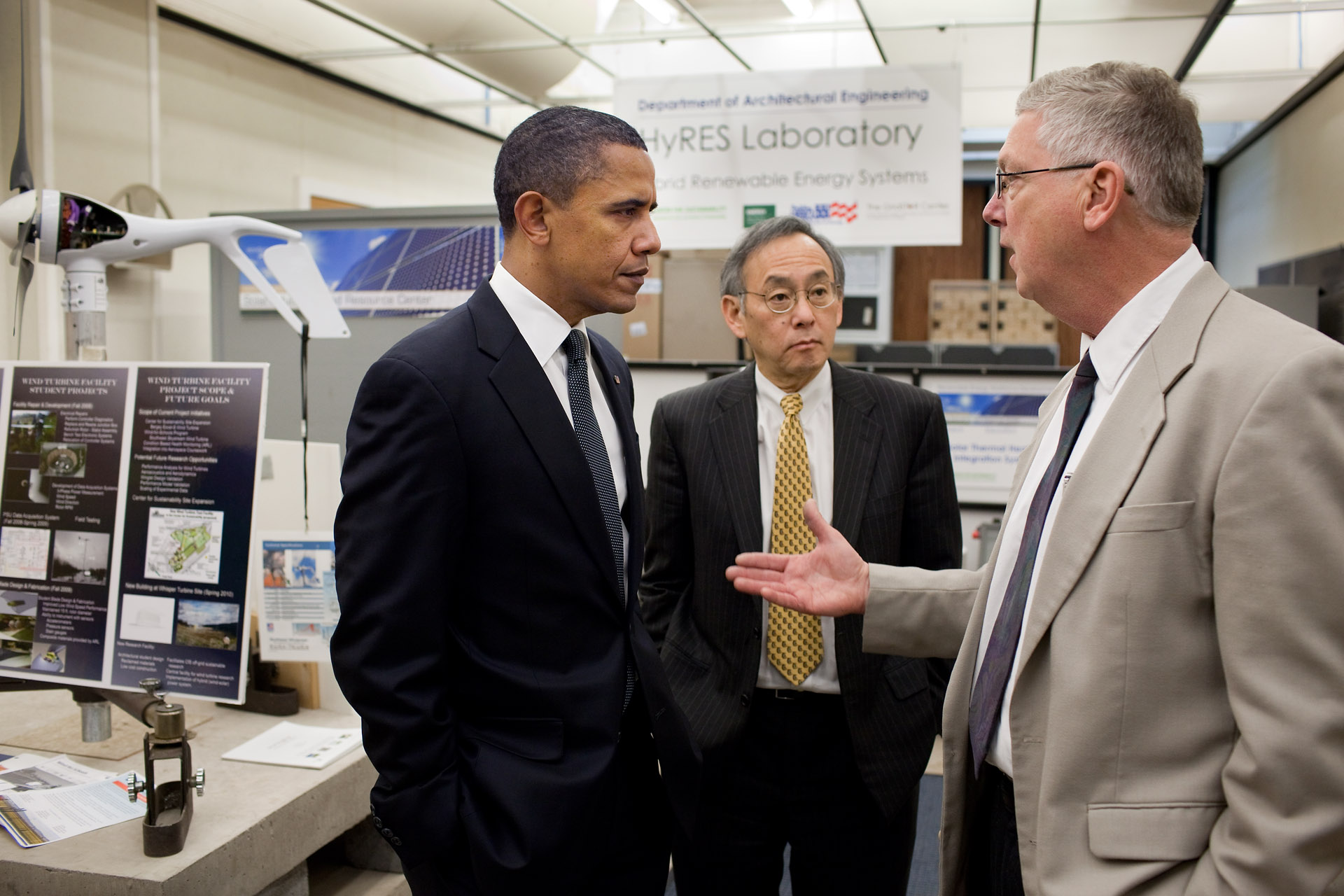
The President's vision to "Win the Future" spelled out in his State of the Union Address was not one founded on vague dreams of a brighter day ahead -- it was founded on ideas, advancements, and principles already cropping up across the country that can help keep America on top if we only stand by them. That's what his visit to Penn State today was about:
And right here, right here at Penn State, a university whose motto is “making life better,” you’ve answered the call. (Applause.) So today you’re preparing to lead the way on a hub that will make America home to the most energy-efficient buildings in the world.
Now, that may not sound too sexy until -- (laughter) -- energy-efficient buildings. (Laughter.) But listen, our homes and our businesses consume 40 percent of the energy we use. Think about that. Everybody focuses on cars and gas prices, and that’s understandable. But our homes and our businesses use 40 percent of the energy. They contribute to 40 percent of the carbon pollution that we produce and that is contributing to climate change. It costs us billions of dollars in energy bills. They waste huge amounts of energy.
So the good news is we can change all that. Making our buildings more energy-efficient is one of the fastest, easiest and cheapest ways to save money, combat pollution and create jobs right here in the United States of America. And that's what we’re going to do. (Applause.)
Specifically, the President was announcing the “Better Buildings Initiative,” which aims to achieve a 20 percent improvement in energy efficiency by 2020, reduce companies’ and business owners’ energy bills by about $40 billion per year, and save energy by reforming outdated incentives and challenging the private sector to act. The White House fact sheet fleshes out those goals, talks about the successes to be built upon from the last two years, and lays out these steps which will be included in the President's coming budget:
- New tax incentives for building efficiency: The President is calling on Congress to redesign the current tax deduction for commercial building upgrades, transforming the current deduction to a credit that is more generous and that will encourage building owners and real estate investment trusts (REITs) to retrofit their properties. These changes could result in a ten-fold increase in commercial retrofit take up, leveraging job-creating investments.
- More financing opportunities for commercial retrofits: Access to financing is an important barrier to increased retrofit investment in some market segments. To address these gaps, the Small Business Administration is working to encourage existing lenders to take advantage of recently increased loan size limits to promote new energy efficiency retrofit loans for small businesses. The President’s Budget will also propose a new pilot program through the Department of Energy to guarantee loans for energy efficiency upgrades at hospitals, schools, and other commercial buildings.
- “Race to Green” for state and municipal governments that streamline regulations and attract private investment for retrofit projects: Much of the authority to alter codes, regulations, and performance standards relating to commercial energy efficiency lies in the jurisdiction of states and localities. The President’s Budget will propose new competitive grants to states and/or local governments that streamline standards, encouraging upgrades and attracting private sector investment.
- The Better Buildings Challenge: The President is challenging CEOs and university presidents to make their organizations leaders in saving energy, which will save them money and improve productivity. Partners will commit to a series of actions to make their facilities more efficient. They will in turn become eligible for benefits including public recognition, technical assistance, and best-practices sharing through a network of peers.
- Training the next generation of commercial building technology workers: Using existing authorities, the Administration is currently working to implement a number of reforms, including improving transparency around energy efficiency performance, launching a Building Construction Technology Extension Partnership modeled on the successful Manufacturing Extension Partnership at Commerce, and providing more workforce training in areas such as energy auditing and building operations.




